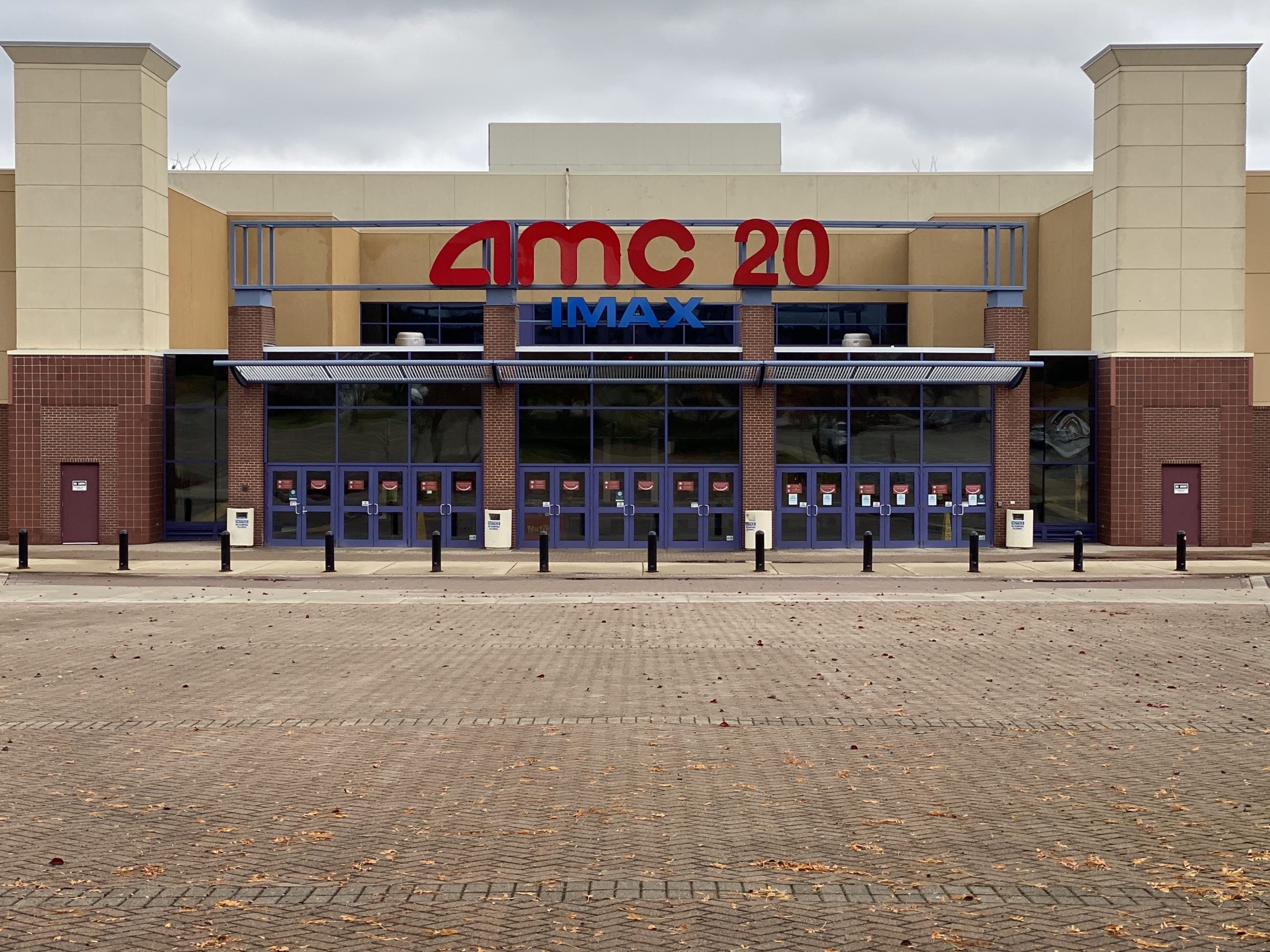
COVID has impacted a wide array of businesses, especially across the entertainment spectrum.
No industry has seen more of a negative effect from the pandemic than movie theaters. Our theory since things got crazy in March is that businesses and brands that were in some sort of trouble pre-pandemic are in a world of hurt – or bankrupt – now.
That certainly applies to most department stores, lots of mediocre restaurants, and other enterprises already teetering when the ball dropped in Times Square this past January.
And there’s no industry that has felt the pain more than the movie theater business. Even before we were all wearing masks, going to the movies had gone from being a primary form of entertainment to just another option.
In recent years, video streaming platforms like Netflix and Hulu have become very mainstream, aided and abetted by the falling prices of big screen TVs and other electronics that simulate the movie-going experience from home.
So, when COVID hit and all movie theaters were shut down, most consumers were already well-positioned with media rooms of one sort or another in their homes. No doubt many have upgraded their home theater situations these past many months.
Where does that leave the movie theater business?
If you’ll excuse the pun, reeling.
In August, I wrote a blog post focused on AMC Theaters and their beleaguered CEO, Adam Aron. At that time, the company was trying mightily to shift from its main business proposition to a streaming model. The Disney movie, Mulan, was about to be released, and the idea was that after a short theater run, AMC would share a portion of the pay-per-view streaming revenue. We still don’t know precisely what happened with Mulan – did it stiff, hold its own, or emerge as a hit?
Because of its odd release pattern, connection with the Disney+ streaming service, and because we’re living in “unprecedented times,” analysts are all over the map over judging Mulan‘s performance.
But for AMC, it appears whatever revenue they gleaned from streaming rev share, it pales in comparison to the costs AMC is incurring as so many theaters are closed or operating at limited capacity.
The fact is, most of us do not want to go to the movies right about now. An ongoing survey from Morning Consult measuring consumer comfort levels with basic activities reveals that as of last week, many of us were feeling better about most activities, including going out to restaurants or even visiting a shopping mall.
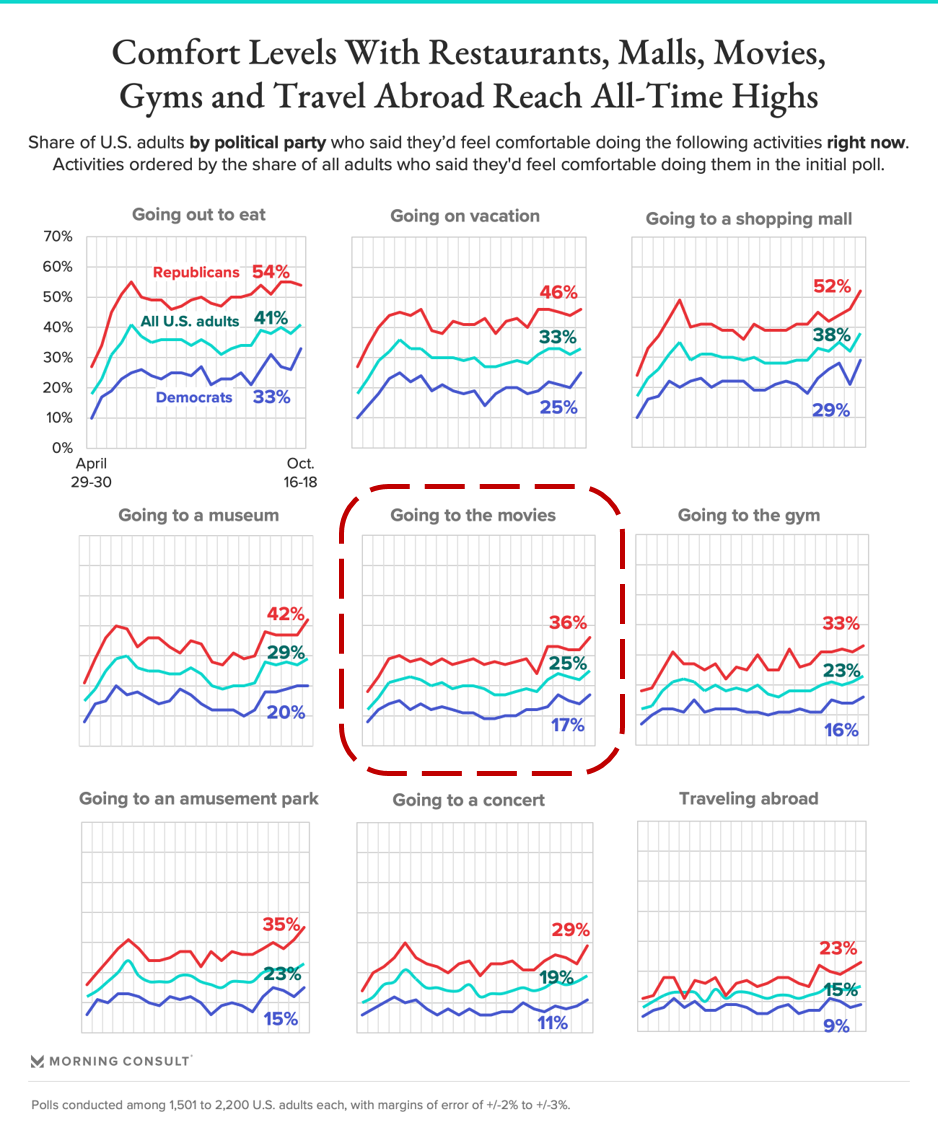
While going to the movies is deemed to be safer than going to a concert or traveling internationally, it is still well down the list of activities most people are eager to engage in. And as you can see by all the activities on the chart above, returning to “normal’ has become highly politicized. In general, Republicans tend to be more open to doing pretty much everything, while Democrats remain cautious.
For a once-mainstream entertainment event like movie-going, these levels won’t cut it. And that’s why AMC would do well to not just hope for a vaccine, but to re-examine their entire business model.
That’s the opinion of A.O. Scott, long-time movie critic for The New York  Times. Last week in a piece aptly titled, “How Much Do You Really Miss Going to the Movies?, he raised the question of the industry’s survival post-pandemic.
Times. Last week in a piece aptly titled, “How Much Do You Really Miss Going to the Movies?, he raised the question of the industry’s survival post-pandemic.
This is a guy who has sat in more movie theaters than most of us, experiencing it all: poor food selections, getting shut out of a film, sitting in the front row, noisy audiences, and sticky floors.
And Scott suggests that movie chains like AMC, as well as small local theaters, take the time to do some serious contemplation about their service, their offerings, their downsides, and their opportunities.
Disney is well on the way to redefining its entire business model, as their own theater releases have been severely impacted by the damaged movie theater model, as well as suffering huge losses on their theme parks.
Disney CEO Bob Chapek boiled it down this way:
“Our creative teams will concentrate on what they do best — making world-class, franchise-based entertainment — while our newly centralized global distribution team will focus on delivering and monetizing that content in the most optimal way across all platforms.”
That may have the ring of corporate-speak, but reading between the lines, there’s no question Disney is re-evaluating everything,” focusing on their strengths during this “Great Reset.”
Will the movie theater industry survive, powered by the nostalgic factor that it’s always been around – a popular choice on “date night,” a chance to see a premier of a favorite franchise, or simply something we’ve done for a long time?
Or will it survive by reinventing itself – taking this anomalous moment in time to truly rethink the experience: reserved seating, healthy food choices, private boxes, concierge service.
AMC may already have this process in progress. It was announced last 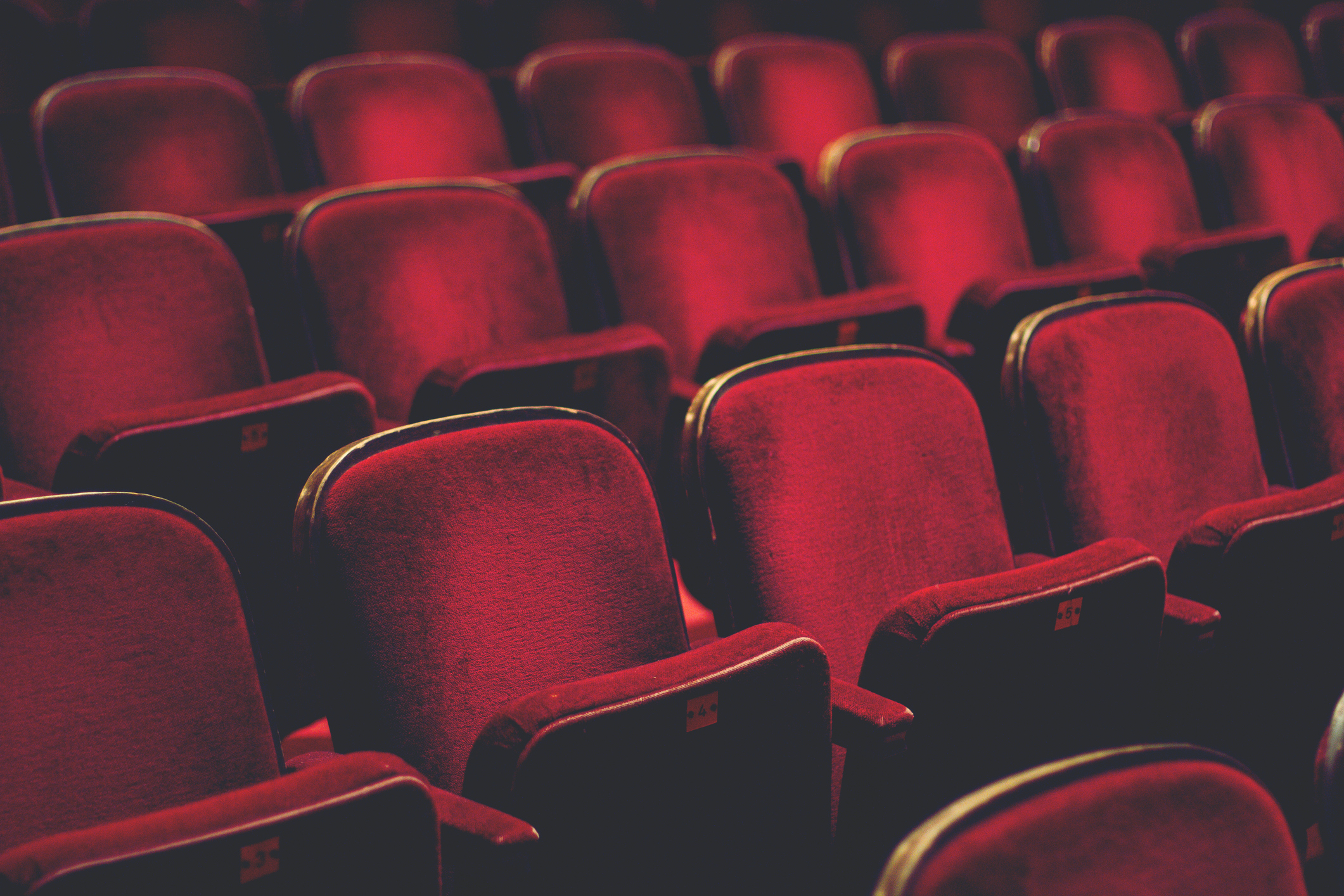 week they’re now offering the use of private theaters for just $99. You can invite up to 20 friends or family members. Of course, refreshments are extra, as is a mic to host your private showing.
week they’re now offering the use of private theaters for just $99. You can invite up to 20 friends or family members. Of course, refreshments are extra, as is a mic to host your private showing.
The move is a band-aid that won’t solve the existential problems facing theater owners, but it may be a way to bring revenue into the door.
As so many businesses are learning from 2020, none has a “right” to survive, based on past performance, nostalgia, and tradition.
Bad experiences are being punished swiftly by consumers. In a study by 3Gem in markets outside the U.S., one in three consumers say they’ll ditch a brand after a bad experience.
Make no mistake about it. Despite having brilliant minds like Jeffrey Katzenberg (Dreamworks) 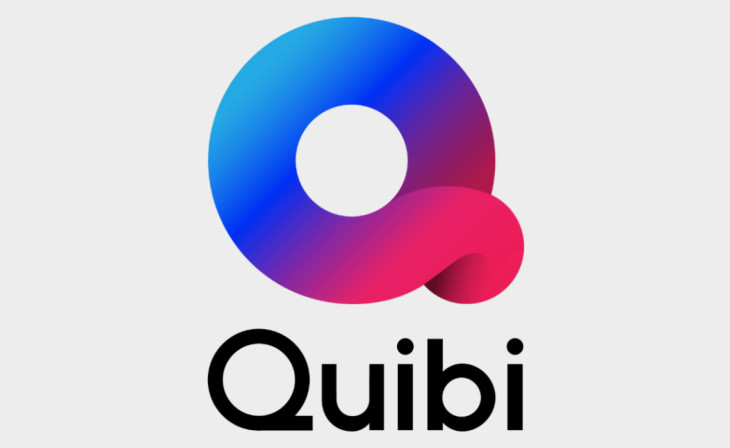 and Meg Whitman (Hewlett Packard), $1.75 billion in investment capital, and support from myriad Hollywood studios and top-level talent, Quibi threw in the towel yesterday, shutting down after just six months.
and Meg Whitman (Hewlett Packard), $1.75 billion in investment capital, and support from myriad Hollywood studios and top-level talent, Quibi threw in the towel yesterday, shutting down after just six months.
Quibi was a subscriber service offering snackable, bite-size little movies that could be consumed on the go. Instead, consumers opted for TikTok.
In this environment, no one, no brand, and no industry has a birthright, hinged on privilege, heritage, or past performance.
And that brings us to the broadcast radio industry – in much better shape than the movie theater or cruise ship business – but still being profoundly rocked by a pandemic, and two painful recessions in just a dozen years.
Waiting for the COVID crisis to subside, betting on the return to cars and bumper-to-bumper traffic, and hoping that whatever the “new normal” is will tolerate long stopsets, mindless blather, and content that is neither live, local, nor entertaining is not a viable strategy.
As this year winds down, it is the perfect time to “white board” radio broadcasting enterprises, whether they’re made up of hundreds of stations across the country – or a mom & pop operation 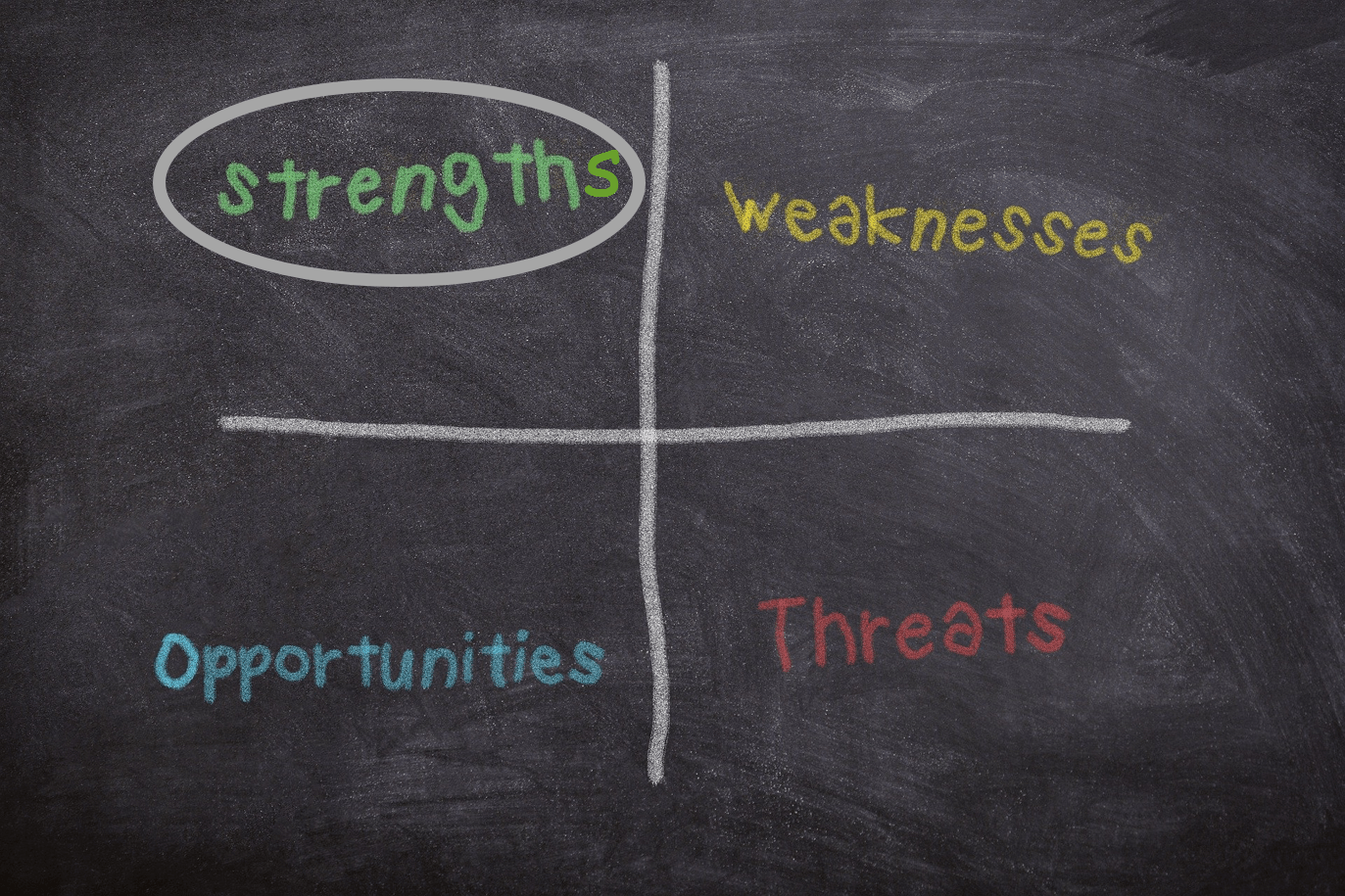 on Main Street.
on Main Street.
What do we do well?
What is worth retaining?
What must we do without?
What “job” will consumers hire us to do post-pandemic? And how can we fulfill those needs?
How will we serve our listeners, our advertisers, and our communities?
No, it is not an easy process as AMC’s Aron and Disney’s Chapek would tell you.
But it’s better than being Katzenberg, Whitman, or the “former CEOs” of the scores of brands that failed to refocus during the Great Reset, and have ended up on the cutting room floor.
Pass the popcorn. This could get interesting.
- What To Do If Your Radio Station Goes Through A Midlife Crisis - April 25, 2025
- A 2020 Lesson?It Could All Be Gone In A Flash - April 24, 2025
- How AI Can Give Radio Personalities More…PERSONALITY - April 23, 2025




I’m probably a contrarian here. but AMC should hang on to their old business model. When this pandemic is over I don’t think people will be rushing to embrace the new normal, I think they will be running back to the old one.
People are sick of Zoom, sick of takeout, sick of social distancing, sick of never being able to see clients, friends, relatives, concerts and yes, movies. Karen’s will be thrilled to hand their best cuticle scissors over to TSA agents and people will pay top dollar to see Gigli if they have to, just so they don’t have to look at that Netflix logo one more time. AMC – don’t look for a streaming model – try to find a way to stay solvent til this is over, because when it is, there will be a lot of people who want to go to the movies.
Radio is another thing entirely. Some of the revenue will never come back, short of a complete reinvention. Which means some of the programming, particularly the local stuff never will either. And based on years of Tech Surveys, that is exactly the stuff that draws people to radio. Might be time to do a SWOT on why people will continue to stick with radio when it is systematically eliminating many of the things that people like most about it. And then ignore it, of course.
SWOT exercises are fine if you actually react to what they reveal. Way back when, radio companies would look at research, fix what people didn’t like, double down on what they did and market both. Now they just cut whatever is most expensive to make each quarter. Probably not the best post pandemic strategy.
But take heart – “Gigli tickets, win em before you can buy em!!” there’s always that…
Bob, I can cut the cynicism with a knife. But that’s why I love about your responses. I agree that once “the COVID is clear,” people will rush back to their old lives. But what are we talking? A year? Two?
In the meantime, brands and entire industries have to do something to stop the bleeding. Or end up in bankruptcy. It’s not an easy situation.
As for radio, my wish and my hope is that we take this rare moment in time to take that hard look at our business and our customers. It’s a rare opportunity, but only if we follow through with it.
And for my money, 4 stars for “Ishtar.”